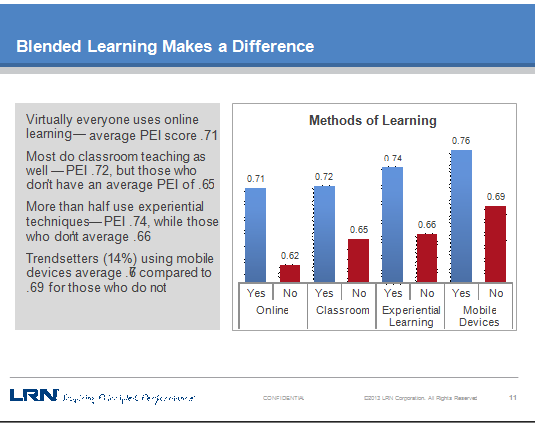A title of a column on the most important task of risk management is certain to get some mail. Here is what I think it is:
The most important task of risk management is providing insights and decision-making options to senior management and the board on a significant, pervasive risk or opportunity that they didn’t have previously, giving the organization a competitive advantage of acting timely before it’s too late.
While some may disagree with my point of view, I am confident most will agree that the potential for disruptive change in the marketplace makes the above task very important.
An Early Mover Has the Advantage
A firm that quickly recognizes a unique opportunity or risk and uses that knowledge to evaluate its options either before anyone else or along with other firms that likewise seize the initiative is an “early mover.” For example, in the mid-2000s, some financial institutions saw the signs of a shifting market and took the initiative in sufficient time before the global financial crisis wave crested, giving their management and board valuable “exit strategy” options. These early movers had the advantage over their less-fortunate counterparts.
To illustrate, Washington Mutual was an unfortunate casualty of the financial crisis. Two former chief risk officers (CRO) asserted that they tried to curb risky lending practices at the bank; however, they claimed they met resistance from top management when they escalated their concerns. One CRO claimed he was excluded from senior executive meetings and meetings with financial advisers when the bank’s response to the growing crisis was being discussed and, by January 2008, was fully isolated until he was fired by the CEO a few months later. The other CRO testified before a Congressional committee that he had tried to limit loans to those who were unlikely to be able to repay, as well as the number of loans made without verifying borrowers’ income. However, he, too, was ignored by executive management.[1]
Washington Mutual filed for Chapter 11 voluntary bankruptcy in 2008. With respect to total assets under management, its closure and receivership is the largest bank failure in American financial history. It didn’t have to happen. Simply stated, risk management was ignored as a discipline. If viewed by executive management as a tick-the-box, compliance exercise, risk management has little strategic relevance.
By contrast, consider a well-publicized success story involving TD Bank Group, which took action in the years leading up to the financial crisis to exit the structured products business. The CRO recommended the bank exit that line of business several years before it overheated and imploded. That CRO became CEO of the bank late last year. Here is an excerpt from a speech he delivered four years ago:[2]
At TD Bank Group, we avoided the subprime mess and were one of the few major banks in the world to do so. How? Several years ago, we decided to exit the structured products business at the height of the market. This was a contrarian move at the time. Most other financial institutions were rushing to get in and we were criticized – even vilified – by some, for our decision to exit the business.
Although it cost us in short-term profitability, it was the right thing to do. To us, the securities were not transparent and the risk-reward relationship was not obvious. These were instruments valued by mathematical models which few people on the planet understood and it wasn’t clear to us that the business model was sustainable. So when everyone else was getting in, we got out.
Thankfully, we’ve benefited from our decision by largely avoiding the subprime meltdown altogether. Having said that, it doesn’t mean we haven’t been impacted by the current economic downturn. Like others, we have. But the impact is considerably less than it would have been otherwise and has provided us with significant flexibility to continue to grow both in the U.S. and Canada.
The point is clear. One bank remains a viable player in the marketplace today, while the other one no longer exists, underscoring why a strong contrarian voice is occasionally needed in an organization’s history. More importantly, there are times when such a voice needs to be heard by the right people.
Enabling a Contrarian Voice is a Matter of Proper Positioning
What separates an early mover from the rest of the herd? Companies fall so in love with their business model and strategy that they fail to recognize changing paradigms and the need to innovate and adjust until it is too late. Companies can rationalize away the improbable scenario or event without considering the consequences of being unprepared if the scenario or event were to materialize. In essence, they embrace the status quo. This status quo bias drives organizations to focus on doing things right (e.g., faster, better, cheaper) rather than being more future-oriented, obsessing about competitors and game-changing opportunities, and seeking how the company can innovate to create market disruption.[3]
Enablement of a contrarian voice is a way to reduce the risk of status quo bias. It is a matter of proper positioning of independent risk management/compliance functions, which entails several important principles:
- Leaders of such functions should be viewed as a peer to business-line leaders;
- They should have a direct reporting line to the CEO;
- They should have a reporting line to the board or a committee of the board, with no access constraints;
- The board or a board committee should conduct mandatory and regularly scheduled executive sessions with these functional leaders; and
- A formalized escalation process should exist.
Most importantly, the board and CEO must have a mutual understanding of the value contributed by these independent functions, with the intent of preserving their independent role within the organization. That understanding existed at one of the aforementioned banks – TD Bank. It didn’t at Washington Mutual.
A Contrarian Analysis Process is Critical
Focusing on what we don’t know requires a process. One approach is to define the critical assumptions representing management’s view of the business environment during the strategic planning time horizon. These assumptions reflect management’s view concerning the enterprise’s capabilities, competitor capabilities and likely actions, expected customer preferences, technological trends, capital availability, and regulatory trends, among other things.
One way to cope with uncertainty is to consider the impact if one or more of these strategic assumptions become invalid. Once management’s assumptions are defined, contrarian statements are developed to suggest plausible as well as extreme scenarios that could affect one or more of them. Management and directors then select the contrarian statements that are likely to have the greatest impact on the company’s ability to execute its strategy and business model if they were to transpire. These statements would ordinarily reflect situations that would arise from events about which the organization currently lacks sufficient information and that management would likely rationalize after-the-fact, “Why didn’t we see it coming?”
For the high-impact contrarian statements, management should develop implication statements that consider the strategic assumption and contrarian statement and address two questions – “What would we do if this assumption underlying our strategy were no longer valid?” and “How would we know if the assumption is no longer valid or is becoming invalid?” As with many strategic uncertainties, action plans arising from an implication statement often include implementing forward-looking trending and other metrics to monitor the vital signs that provide insights regarding the continued validity of the assumptions.
Since no one knows for sure what’s going to happen in the future, the above analysis would at least help management and directors understand the implications of change as well as what needs to be monitored closely to detect a change. This approach is a far cry from the traditional shuffling of known risks on a risk or heat map.
Failure to attain “early mover status”, as we’ve defined it, can be fatal in today’s complex and ever-changing business environment. While no one can predict the future, the one thing we can count on is that the validity of management’s strategic assumptions will come under question over time as the business environment changes.
Action Must Follow Recognition
We’ve pointed out the importance of recognition – meaning an early mover quickly recognizes the market opportunities and risks that matter – and outlined a process to facilitate timely recognition. Of equal importance is reaction, meaning an early mover reacts to the significant opportunities and risks it recognizes on a timely basis. Companies that demonstrate the ability to adapt to a changing business environment typically foster an organizational culture that facilitates consideration of the impact of disruptive change on critical strategic assumptions. Most importantly, they encourage and stimulate managerial intuition and ingenuity to translate information regarding the reality of altered strategic assumptions into actionable revisions to their strategic and business plans. In essence, they seek to make their organizations resilient so that they have the ability and discipline to act decisively on necessary adjustments to strategic and business plans in response to changing market realities.[4]
A Concluding Comment
Yes, there may be other views as to the most important risk management tasks. My appointed “most important” task may not be yours, but I hope we can at least agree it should be high on everyone’s list.
[1] “Kerry Killinger, Ex-WaMu CEO, It’s ‘Unfair’ Bank Didn’t Get Bailed-Out,” Huffington Post, June 13, 2010, www.huffingtonpost.com/2010/04/13/kerry-killinger-exwamu-ce_n_535749.html?.
[2] See Rotman School speech by then chief operating officer (COO) of TD Bank, Bharat Masrani, “TD Bank, America’s Most Convenient Bank,” April 2011.
[3] Create Marketplace Disruption: How to Stay Ahead of the Competition, Adam Hartung, 2012.
[4] “Is Your Organization an Early Mover?,” Issue 7, Volume IV of The Bulletin, available at www.protiviti.com.



 Jim DeLoach, a founding
Jim DeLoach, a founding 






